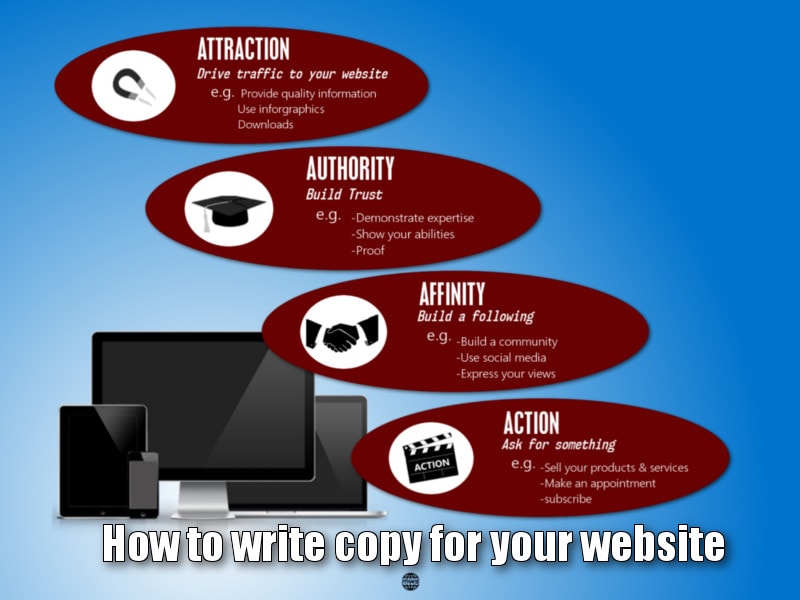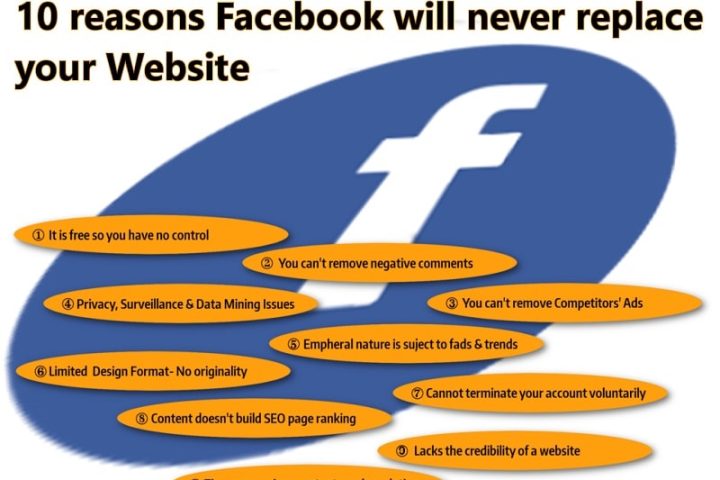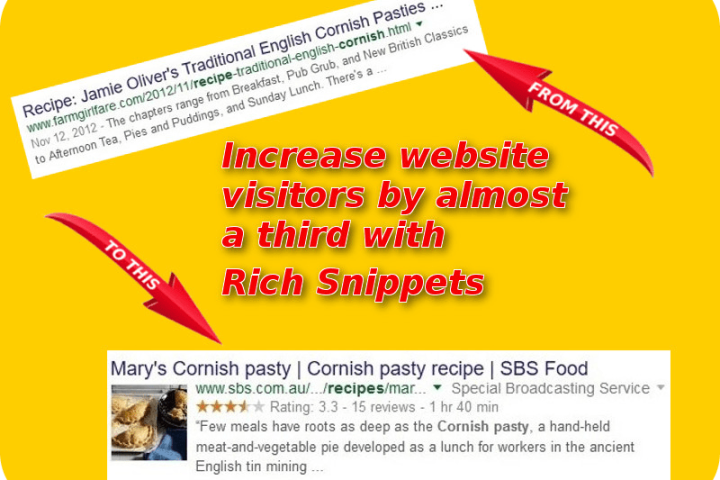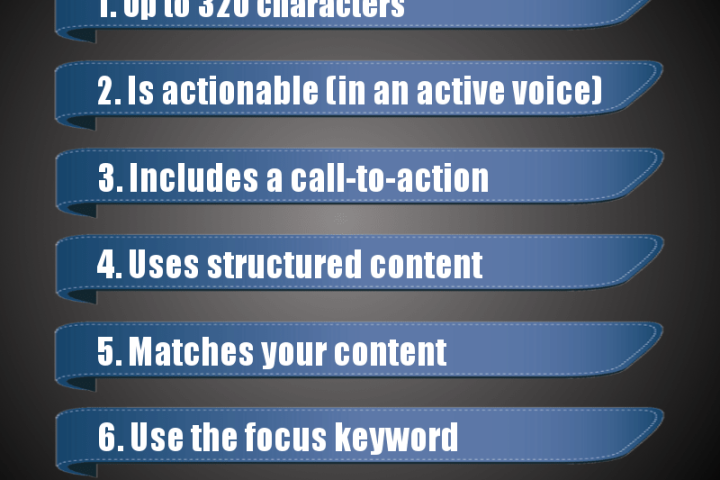Four types of website content
Website content is all about creating a website that people actually want to use. You can enhance your users’ experience (UX) by employing psychology such as social proof . You also need to organise your web copy so that you can present it to your users in a way that is easy for them to understand and to navigate. Properly organised web copy is based on an understanding of your users’ needs. Look at your content from your user’s perspective.
There are four types of website content:
Attraction – to bring people to your website.
Authority – to build trust
Affinity – to build a following
Action – to ask for something
Attraction Content
The aim of Attraction content is to drive traffic to your website. Examples of attraction copy include:
List Articles, – you know the sort of thing “ Ten steps to…etc.” Or “Five reasons you …etc
Infographics, – these are visual representations of information, data or knowledge intended to present information quickly and clearly. Examples are Pie Charts. Graphs, etc
Downloads, – these can include software, guides, inspirational posters, etc
Authority Content
The aim of authority content is to demonstrate your expertise in a particular field, it is not enough to simply proclaim your expertise, you have to prove it. Once you have demonstrated your authority, people are more likely to trust you and ultimately to do business with you. Authority content is where you write about something you know about, in a way that will add value to your readers.
Affinity Content
The aim of Affinity content is to build a community of people with similar views and beliefs as you. A good example of affinity copy is Facebook. Facebook is all about communities of people who share the same worldview. Affinity copy can be risky, in that by stating your opinions you are always in danger of provoking those that disagree with you. If you remain bland and try not to provoke anyone, you won’t attract anyone.
Action Content
The aim of action content is to get your website users to do something. Common examples of actions include:
Asking people to buy your product or service
Inviting readers to comment on an article
Inviting people to subscribe to your email newsletter
Asking people to follow you on social media
These four types of content are not mutually exclusive. Website content sometimes includes just one type of copy at other times, a blend of types. For example launching a survey (action) can involve your audience (attraction) build a following (affinity) and define yourself as an expert in the field (authority). Let me know how you use the different types of web content to improve your own website copywriting?




